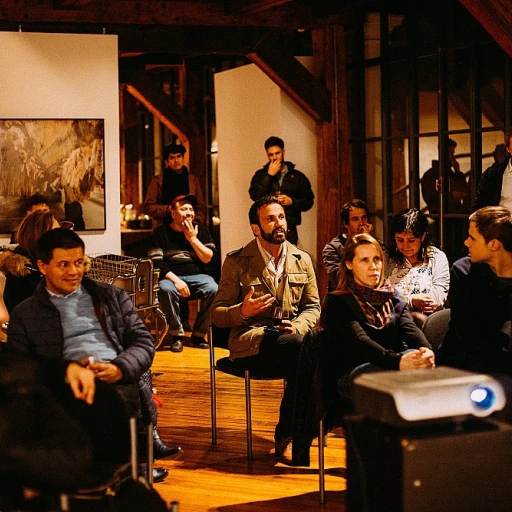
Understanding no code formation in design
Why no code is changing how designers learn and work
No code formation is quickly becoming a game changer in the design world. Instead of relying solely on traditional coding skills, designers can now use visual tools and automation to build solutions, test skills, and apply their creativity to real business processes. This shift is not just about making things easier. It’s about opening up new ways to learn, develop skills, and apply knowledge in practical, hands-on projects.
With no code programs, the learning curve is less steep. Training often focuses on building blocks and intelligent solutions, letting you experiment and learn by doing. You can study advanced techniques, practice problem solving, and even prepare for interview scenarios by working on real projects. This approach helps you identify high-value applications for your business or clients, and gives you the chance to build skills that are relevant in today’s market.
- Hands practice with low code and no code tools
- Application process that mirrors real-world business needs
- Opportunities to develop skills in automation, data, and artificial intelligence
- Program managers and teaching practice focused on practical outcomes
Many no code programs are designed to fit into your week, making it easier to balance learning with work. You will work on projects that let you test your problem solving skills, apply what you learn immediately, and build a portfolio that shows your ability to deliver top tier solutions. As you progress, you’ll see how no code formation can help you move from basic application building to more advanced, intelligent solutions.
If you’re curious about how gamification can enhance your learning experience and make training more engaging, check out this insightful article on gamification in digital design.
Key benefits for designers
Unlocking New Capabilities for Designers
No code formation is opening up a world of possibilities for designers, making it easier to learn and apply advanced techniques without a traditional programming background. With hands-on practice and targeted training, designers can now build skills that go beyond visual creativity, integrating automation and intelligent solutions into their projects.
- Faster learning and application: No code tools allow designers to quickly test skills and apply knowledge to real-world business processes. This speeds up the learning curve, making it possible to develop skills in just a week or two, rather than months of study.
- Enhanced problem solving: By using no code solutions, designers can focus on solving skills that matter most for their projects. They can identify high-impact opportunities, automate repetitive tasks, and streamline workflows with minimal technical barriers.
- Broader skill set: No code formation programs often include modules on artificial intelligence, data integration, and machine learning. This helps designers build a top tier skill set, making them more competitive in the job market and more valuable to their teams.
- Business application: Designers can now participate in the application process for business solutions, working closely with program managers to create intelligent solutions that address real business needs. This bridges the gap between design and business, empowering designers to contribute at a strategic level.
- Accessible training and resources: Many no code platforms offer structured training, interview prep, and teaching practice. This makes it easier for designers to develop skills, test their abilities, and apply what they learn directly to projects.
With these benefits, no code formation is not just about learning new tools. It’s about building the foundational building blocks for a modern design career, where automation, low code, and intelligent solutions are part of everyday practice. For more on how digital design is evolving, check out this article on the impact of augmented reality on user experience in digital design.
Popular no code tools for design projects
Essential no code tools reshaping design work
No code tools have become the building blocks for modern design projects. They enable designers to apply their skills and knowledge without needing to write traditional code. This shift is not just about convenience—it’s about empowering professionals to focus on problem solving, automation, and business processes, making design more accessible and efficient.
- Webflow: A top tier platform for building responsive websites visually. Designers can learn advanced techniques, test skills, and develop skills in animation and layout, all while automating repetitive tasks. Webflow’s training resources and hands practice opportunities make it a favorite for those looking to build skills quickly.
- Figma (with plugins): Figma’s collaborative environment, enhanced by no code plugins, allows for real-time application of design knowledge. Program managers and teams can identify high-impact solutions and streamline the application process for design systems, making it easier to manage projects and business needs.
- Airtable: This tool combines the familiarity of spreadsheets with the power of databases. Designers can automate data flows, apply intelligent solutions, and integrate with other platforms to support business processes. Airtable is especially useful for those who want to build and test skills in data-driven design.
- Zapier: Zapier enables automation between apps without writing code. It’s ideal for designers who want to automate workflows, connect tools, and focus on creative problem solving. With Zapier, you can learn how to apply automation to everyday tasks, freeing up time for more strategic work.
- Bubble: For those interested in building web applications, Bubble offers a low code environment that supports advanced techniques and intelligent solutions. It’s a great way to study application building, develop skills in user experience, and test skills in real-world scenarios.
Many of these platforms now integrate artificial intelligence, further expanding what designers can achieve without traditional programming. For a deeper dive into how AI is influencing design tools and processes, check out this analysis of artificial intelligence in design.
By leveraging these no code tools, designers can focus on learning, teaching practice, and interview prep, all while building real-world projects. The flexibility to apply knowledge and build intelligent solutions means that even in a single week, designers can go from concept to application, testing and refining their problem solving skills along the way.
Challenges and limitations of no code solutions
Common Obstacles When Using No Code Solutions
No code tools are changing how designers approach projects, but they are not without their challenges. While these platforms promise to simplify building and automation, understanding their limitations is crucial for anyone looking to apply them in real-world business processes.
- Limited Customization: Many no code tools offer a set of building blocks, but advanced techniques or unique features may require traditional coding. This can restrict the scope of what you can build, especially for top tier or complex projects.
- Learning Curve: Despite being marketed as easy, effective use of no code solutions still demands training and hands practice. Designers must study the application process, test skills, and develop problem solving skills to identify high-impact opportunities for automation.
- Integration Issues: Connecting no code platforms with existing business systems or data sources can be tricky. Some tools lack robust support for integrating with advanced artificial intelligence or machine learning features, which can limit intelligent solutions.
- Scalability Concerns: As your application or business grows, no code solutions may struggle to keep up. Program managers often find that scaling up requires moving to low code or custom code tools, especially when dealing with large volumes of data or complex workflows.
- Security and Compliance: Not all no code platforms meet the security standards required for sensitive business applications. It’s essential to study the platform’s compliance certifications and understand how your data will be handled.
How to Overcome These Challenges
To make the most of no code formation, designers should focus on continuous learning and hands-on practice. Enrolling in a structured program or training can help build skills and keep up with evolving tools. Applying knowledge through real projects, interview prep, and problem solving exercises will work to strengthen your expertise.
It’s also important to stay updated on the latest developments in low code and artificial intelligence, as these can expand what’s possible with no code solutions. By developing a strong foundation in both design and technology, you’ll be better equipped to identify high-value opportunities and apply intelligent solutions in your workflow.
Integrating no code formation into your design workflow
Practical steps to embed no code learning into your daily routine
Integrating no code formation into your design workflow is about more than just picking up new tools. It’s a shift in how you approach problem solving, automation, and the application of intelligent solutions. Here’s how you can make this transition smoother and more effective:
- Start with hands-on practice: Dedicate a week to explore one no code tool at a time. Apply what you learn to real projects, even if it’s just a small part of your workflow. This builds practical knowledge and helps you test skills in context.
- Identify high-impact business processes: Look for repetitive tasks or bottlenecks in your current workflow. These are prime candidates for automation using no code solutions. By focusing on these areas, you can quickly see the value of your new skills.
- Combine learning with real-world application: Use your ongoing projects as a training ground. For example, automate data collection or prototype user flows with no code tools. This approach helps you develop skills while delivering value to your business or clients.
- Leverage advanced techniques: As you gain confidence, explore low code options and machine learning integrations. Many no code platforms now offer artificial intelligence features, enabling you to build intelligent solutions without writing complex code.
- Collaborate with your team: Share your learning journey with colleagues or program managers. Group study sessions or interview prep workshops can accelerate your understanding and help you apply building blocks of no code to larger projects.
Measuring progress and refining your approach
To ensure your no code formation is effective, regularly review your progress. Set clear goals for each program or training you undertake. Use feedback from your projects to refine your approach and identify areas for further study. Over time, you’ll build top tier problem solving skills that will work across a variety of design and business contexts.
Remember, integrating no code into your workflow is not a one-time event. It’s an ongoing process of learning, testing, and applying new knowledge to solve real-world challenges. With consistent effort, you’ll be able to develop skills that keep you ahead in the evolving design landscape.
The future of design with no code formation
Designers as Solution Architects
The rise of no code formation is shifting the role of designers. Instead of focusing only on visuals, designers are now expected to apply their problem solving skills to build intelligent solutions. This means using low code and no code tools to automate business processes, manage data, and even integrate artificial intelligence into projects. The ability to identify high-impact opportunities and develop skills in automation is becoming essential for those who want to stay relevant in the industry.
Continuous Learning and Hands-On Practice
Designers who invest in ongoing training and learning programs are better equipped to adapt to new tools and advanced techniques. Many programs now include hands practice, allowing participants to test skills on real-world projects. Whether you’re preparing for interview prep or looking to build skills for a top tier business, hands-on application is key. The application process for these programs often emphasizes the importance of building blocks and practical experience over theoretical study.
Collaboration with Program Managers and AI
As no code solutions become more sophisticated, collaboration between designers, program managers, and machine learning experts is increasing. Designers are expected to understand how to use code tools and data to create business-ready applications. This collaboration leads to more efficient workflows and the ability to deliver advanced, intelligent solutions that meet business needs.
Preparing for the Next Week, Month, and Beyond
The future of design with no code formation is about agility. Designers will work on projects that require quick adaptation, continuous learning, and the ability to apply new knowledge rapidly. Those who embrace these changes and develop their problem solving and technical skills will be well-positioned to lead in the evolving design landscape.














